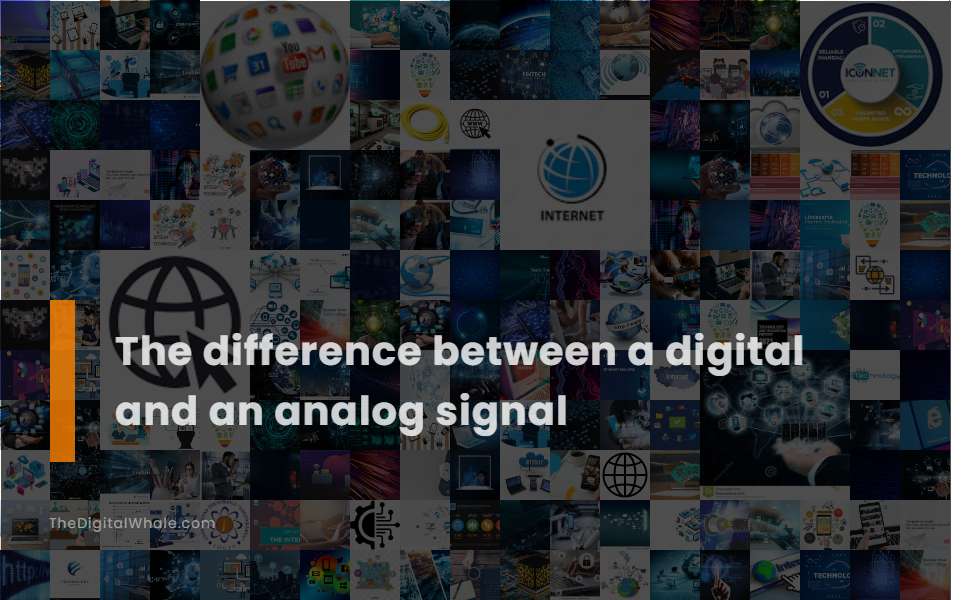The Difference Between A Digital and An Analog Signal
What is the difference between an analog and digital signal? What is the difference between an analog and digital signal? Let's find out more about The Difference Between A Digital and An Analog Signal.

Representation: Analog signals are continuous, while digital signals are discrete.
Analog signals represent data through continuous fluctuations, allowing them to take on any value within a given range, whereas Digital Signals employ discrete values, usually binary, to represent information, characterized by distinct and abrupt transitions.
Signal Values: Analog signals use a continuous range of values, while digital signals use discrete values (0 and 1).
Analog signals represent data through a continuous range of values, allowing for infinite possible values within a given range. In contrast, Digital Signals use discrete values, typically 0 and 1, which are distinct and quantized, making them more resistant to noise and interference.
Noise Susceptibility: Analog signals are highly susceptible to noise, while digital signals are resistant to noise.
Analog signals are highly susceptible to noise due to their continuous nature, making them vulnerable to external factors like electromagnetic interference, thermal noise, and other types of noise. In contrast, digital signals are more resistant to noise because they are discrete and can be easily filtered and processed, reducing the impact of noise on the signal. To understand more about these differences, you can visit the detailed explanation on the Atlas Scientific Blog.
Accuracy: Digital signals maintain higher data accuracy compared to analog signals.
Digital signals maintain higher data accuracy compared to analog signals because they are less prone to signal degradation during transmission and are more resistant to noise and interference, ensuring that the received data matches the transmitted data accurately. For more detailed insights, consider visiting the comprehensive guide on Analog Vs Digital Signal by Aim Dynamics.
Transmission: Digital signals are more reliable in transmission and less prone to signal degradation.
Digital signals are more reliable in transmission because they are less prone to noise and distortion, allowing for higher transmission rates and better signal quality over long distances. Unlike analog signals, which deteriorate and become noisy during transmission, digital signals experience less noise, distortion, and interference when conveying information. This makes them more reliable for transmission compared to analog signals, which are susceptible to generation loss and noise. For a deeper exploration of how these signals function, see the detailed comparison on Software Testing Help. The enhanced reliability of digital signals ensures they are preferred for modern communication technologies.
Related:
How can I be a responsible digital citizen? What are some good ways to be a responsible digital citizen? Let's find out more about How Can You Be A Responsible Digital Citizen?.
Bandwidth: Analog signals generally consume less bandwidth, while digital signals require more bandwidth.
Analog signals generally have lower bandwidth compared to digital signals because they use a continuous range of values. This characteristic makes them well-suited for applications such as audio and video transmission. In contrast, digital signals consist of discrete 0 and 1 values, which lead to a need for higher bandwidth due to their discrete nature and suitability for computing and digital electronics. These preferences stem from the way signals transmit information: analog signals utilize continuous voltage variations, whereas digital signals use discrete pulses. Consequently, digital signals often require more bandwidth to achieve the same level of information transmission as analog signals.
Power Consumption: Digital signals use less power for data transmission compared to analog signals.
Digital signals generally use less power for data transmission compared to analog signals, as digital devices are more power-efficient and have faster data transfer rates without the degradation seen in analog signals. For more in-depth information on this topic, you can explore the research on Analog and Digital Signals provided by EITC. Understanding these differences is crucial as it impacts the efficiency and effectiveness of modern communication systems.
Circuit Components: Analog signals are processed by analog circuits, while digital signals are processed by digital circuits.
Analog signals are processed by Analog Circuits, which use components like resistors, capacitors, inductors, diodes, transistors, and operational amplifiers to handle continuously varying signals. Digital signals, on the other hand, are processed by Digital Circuits that utilize components such as transistors and logic gates, and often include microcontrollers or other computing chips to handle discrete, binary signals.
Applications: Analog signals are suitable for audio and video transmission, while digital signals are suitable for computing and digital electronic operations.
Analog signals are ideal for audio and video transmission due to their high fidelity in reproducing original information and continuous waveforms, as seen in applications like AM and FM radio broadcasting, analog television, and vinyl record players. In contrast, digital signals are prevalent in computing and digital electronic operations, such as smartphones, computers, and digital cameras, due to their resistance to noise, high accuracy, and compatibility with Digital Processing.
Signal Characteristics: Analog signals are characterized by amplitude, period, wavelength, and phase, while digital signals are defined by parameters like amplitude, timing, rise/fall times, noise margin, and encoding.
Analog signals are characterized by continuous waveforms with properties such as amplitude, period, wavelength, and phase, whereas digital signals are discrete and defined by parameters like amplitude, timing, rise/fall times, noise margin, and binary encoding (0s and 1s).
Related:
What are some examples of cyberbullying in school? What is Cyberbullying? - Definition & Examples - Avast Swatting. Let's find out more about What Is An Example of Cyberbullying?.
